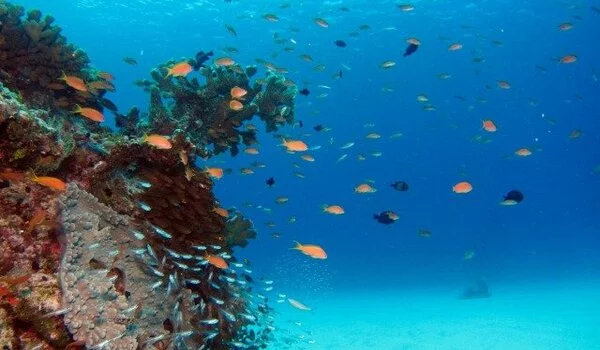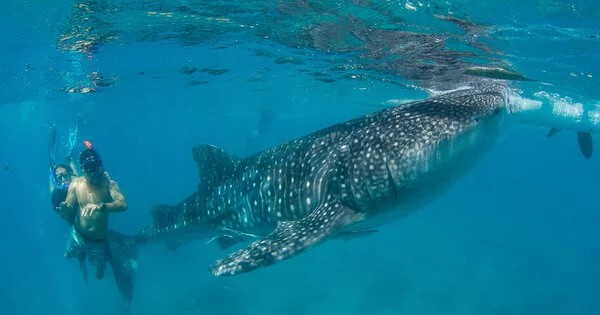All strategies are on the table – and under the microscope – as California, the United States, and the rest of the world work to meet commitments to conserve 30% of oceans and lands by 2030. Marine protected areas (MPAs), which are defined, designated, and managed for long-term conservation, are a valuable tool in the ocean. MPAs, among other things, protect habitats and promote species diversity. They are also valuable to communities and industries.
A new study on the impact of MPAs on the recreational scuba diving industry in California’s Northern Channel Islands has been published by researchers at UC Santa Barbara’s Marine Science Institute. Their findings show that MPAs benefit the scuba diving industry in Southern California, and they emphasize that the diving community should be considered a key stakeholder in MPA decision-making.
“UCSB has a strong history of conducting marine science in the Channel Islands,” said Molly Morse, senior manager at the campus-based Benioff Ocean Science Laboratory. “We hope this research contributes to that legacy of highlighting the measurable value of these ecosystems not only as a critical resource to fishers but also to those of us that place significant value in experiencing and exploring the ‘Galapagos of North America’ with our mask and fins.”
We hope this research contributes to that legacy of highlighting the measurable value of these ecosystems not only as a critical resource to fishers but also to those of us that place significant value in experiencing and exploring the ‘Galapagos of North America’ with our mask and fins.
Molly Morse
The team analyzed patterns from millions of Automatic Identification System (AIS) data points from for-hire scuba diving vessels to gain long-term insight into how MPAs shape ecotourism in general. (AIS is an onboard broadcast system that transmits high-resolution vessel location and behavior data.) The researchers were able to identify vessel behaviors associated with non-extractive ecotourism (e.g., underwater wildlife viewing, photography) versus recreational lobster fishing based on a set of behavioral criteria confirmed through interviews with for-hire dive vessel captains, and to compare the location of these activities within MPAs, on MPA borders, or outside of MPAs.
They found that from 2016-2022, dive vessels engaged in ecotourism prefer MPAs, and that dive vessels primarily conducting recreational lobster fishing prefer MPA border zones. Specifically, a high proportion of the most popular ecotourism dive sites (38%) were located in MPAs, a large proportion of the total number of unique ecotourism dive events (45%) were conducted within MPAs, and vessels engaged in ecotourism diving exhibited high selection of MPAs.

Meanwhile, scuba diving vessel behavior in the lobster scenario, where vessels were ostensibly engaged primarily in recreational lobster fishing, revealed very different patterns. The majority of lobster fishing dive events (78%) occurred outside of MPAs, but these dive vessels preferred the buffer zones around the MPAs. According to 83% of owner/operator survey respondents, hunting (i.e., spearfishing, lobster fishing) was better near an MPA due to the so-called “spillover effect,” in which species are so abundant and productive in an MPA that they spill over into surrounding areas – similar to interest earned from a savings account.
According to Morse, this effect is part of what draws divers to these specific MPAs. But what are the biggest draws?
“People come from around the state and around the world to dive the Channel Islands, drawn by playful sea lions, underwater cathedrals of emerald kelp forests and giant sea bass weighing four times more than the divers themselves,” she said. “The dive captains we interviewed stated that the MPAs of the Northern Channel Islands — Anacapa, Santa Cruz, Santa Rosa, San Miguel — enabled more of these experiences for their clientele.”
Previous discussions about the establishment of new MPAs or changes to existing MPA management have tended to focus on large- and small-scale fisher engagement and evaluations of how this management tool affects fishing. “Given the significant role of the scuba sector in the blue economic portfolio of small and large coastal communities,” Morse continued, “it is critical to understand how this stakeholder community interacts with and is influenced by MPAs.” Ocean ecotourism is a rapidly expanding sector of coastal economies that has a significant impact on the health of coastal biodiversity and the future of coastal planning.”
This study’s focus on scuba diving — an important sector of the Southern California marine ecotourism industry — is unique. Ecotourism is among the largest sectors in the ocean economy, constituting some 50% of all global tourism, equal to $4.6 trillion, the authors note. Yet it is an understudied benefit of marine protected areas.
“We are at a critical juncture in history as state, national, and global leaders consider how to achieve goals of protecting 30% of land and water by 2030,” said co-author Douglas McCauley, an ecology, evolution, and marine biology professor and director of the Benioff Ocean Science Laboratory. “This research sheds light on the numerous benefits that marine protected areas provide to our local communities and economy.” And these MPAs are only 20 years old; based on other research, I believe we can predict that these benefits will only increase as these protected areas mature.”





